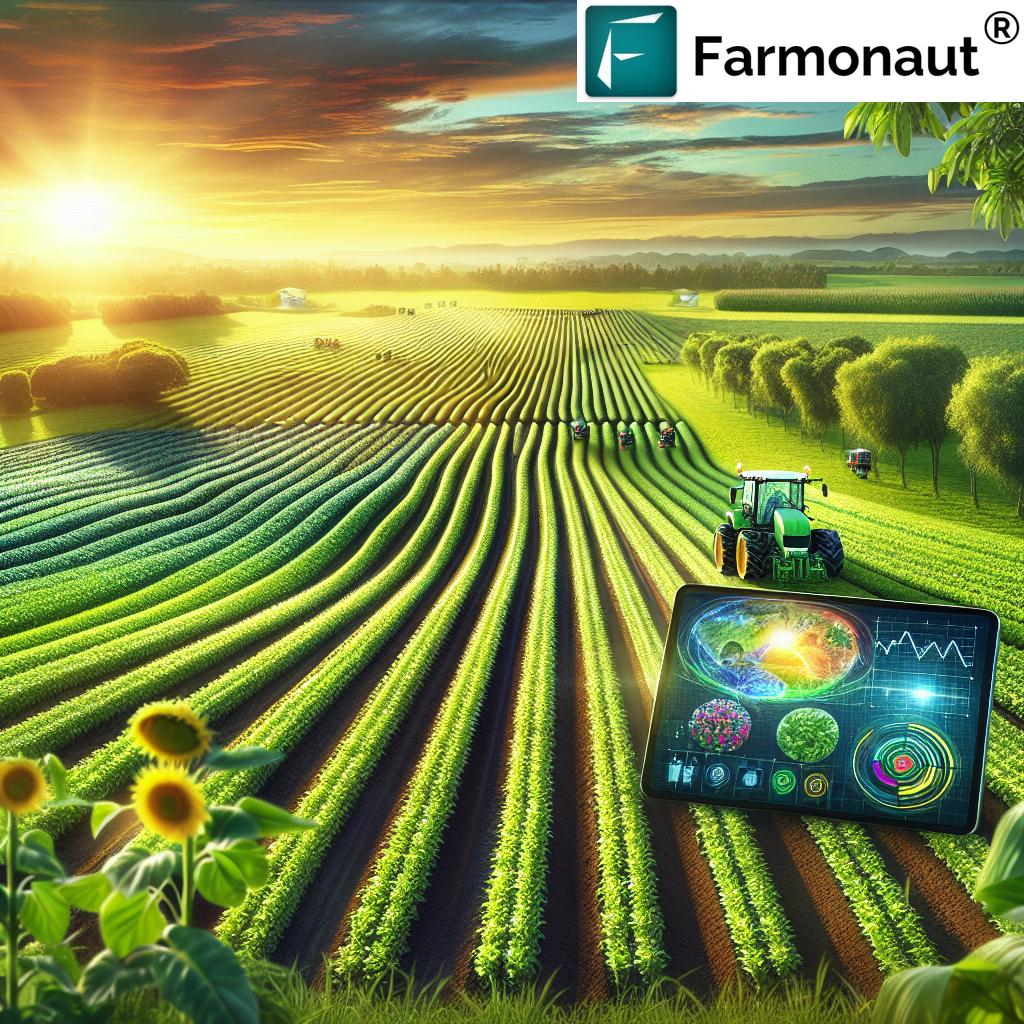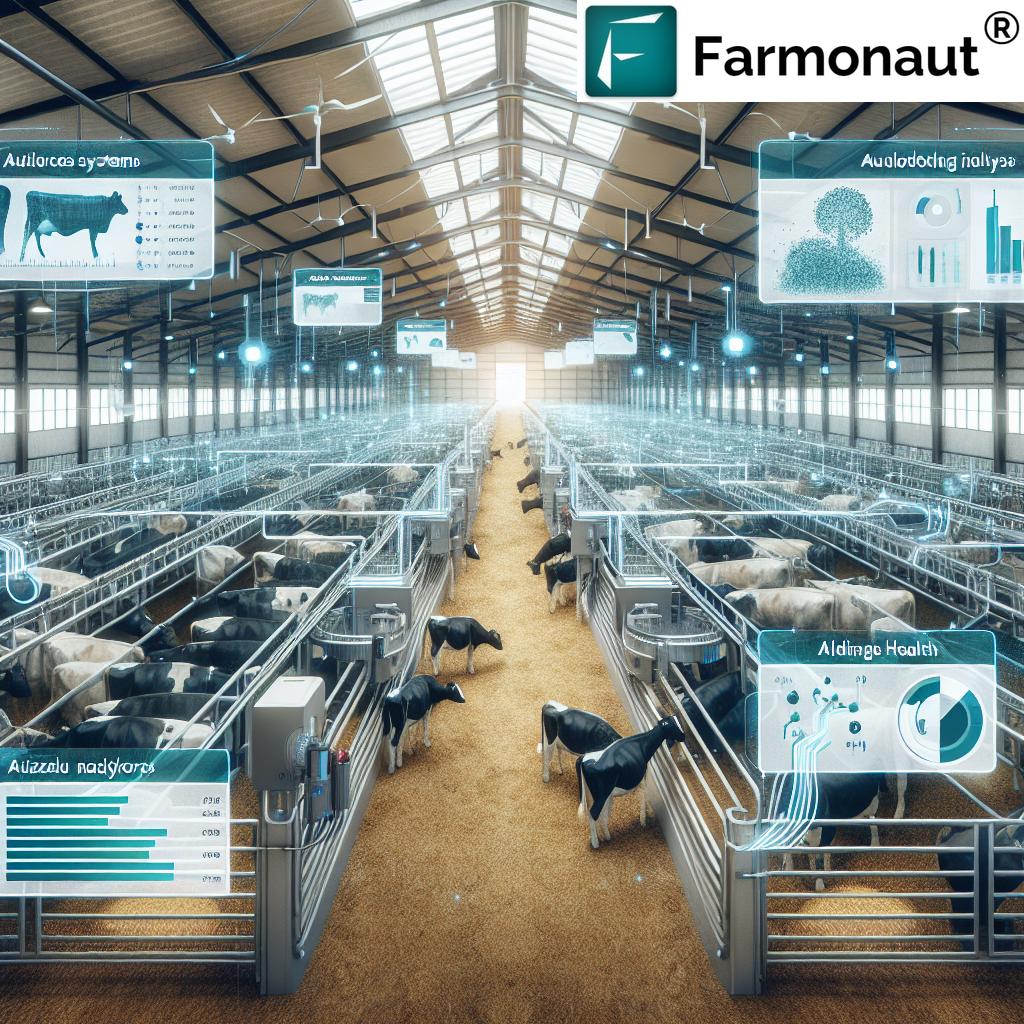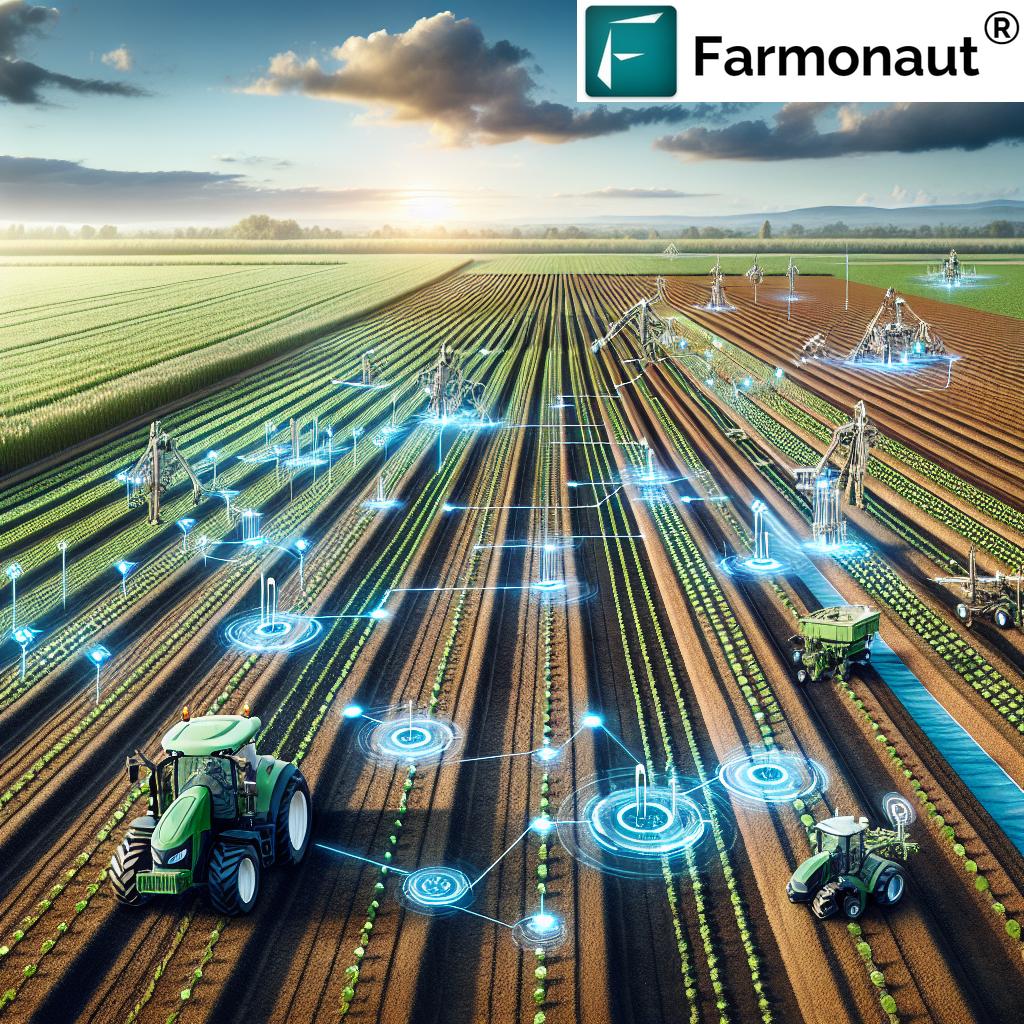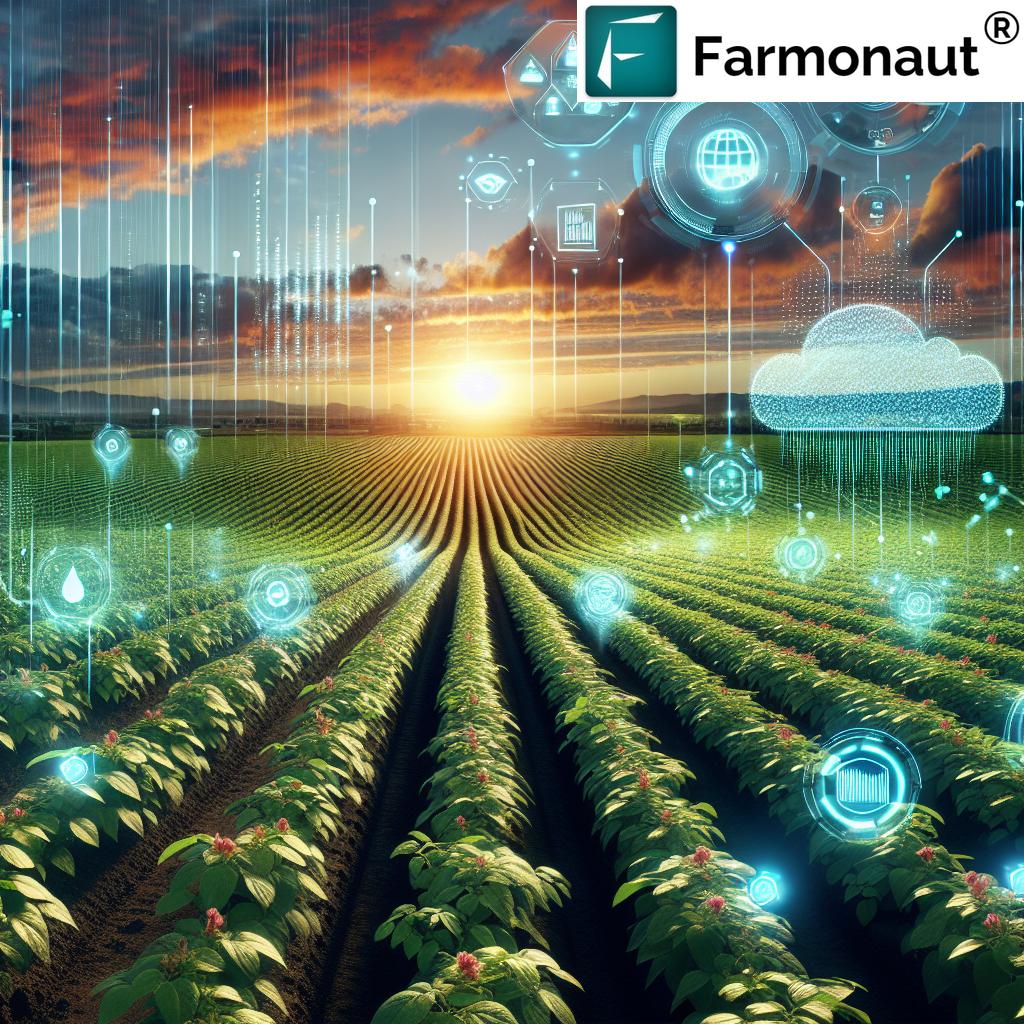Artificial Intelligence in Agriculture: 7 Shocking Innovations
In an era where efficiency, sustainability, and food security shape the future of humanity, Artificial Intelligence in agriculture (AI in agriculture) emerges as a transformative force. By leveraging AI-driven analytics, precision farming technologies, and data-centric management, we’re witnessing unprecedented advancements in crop health, resource optimization, and sustainability. Today, the marriage of cutting-edge AI with traditional agriculture is not a futuristic vision—it’s the new standard redefining how we feed the planet.
“AI-powered precision farming can increase crop yields by up to 30% through advanced data analysis and real-time monitoring.”
Transforming Agriculture with AI: A Brief Overview
The diverse landscape of agriculture is being reshaped by AI-powered solutions, offering farmers and agribusinesses innovative ways to monitor crops, manage livestock, optimize resources, and drive sustainable agriculture. From autonomous farming equipment and AI-based crop monitoring to complex agricultural data analytics for supply chain optimization, artificial intelligence enables:
- Early detection of plant diseases using satellite imagery and drones, minimizing loss and chemical usage.
- Precision application of water, fertilizers, and pesticides via AI-guided intervention.
- Predictive algorithms that analyze weather, soil, and growth conditions for optimized farm management.
- Livestock health monitoring, ensuring animal welfare and production efficiency.
- Blockchain-enabled traceability for guaranteeing the authenticity and quality of farm products.
With rapid digitalization, data-driven ecosystems are now accessible and affordable—not only to large industrial farms but also to individual farmers globally. Companies like Farmonaut are leading this revolution by delivering affordable, scalable, and easy-to-use digital platforms that bring the power of AI in agriculture to every field and farm.
Comparison Table: Top 7 AI Innovations in Agriculture
| Innovation Name | Brief Description | Primary Application | Adoption Rate* (%) | Efficiency Gain (%) | Sustainability Impact |
|---|---|---|---|---|---|
| AI-powered Crop Monitoring | Uses satellite/drone imagery & ML to monitor health, detect diseases/pests. | Crop monitoring, disease detection | 55 | 25–30 | Reduces pesticide use by 15%, cuts CO₂ emissions from unnecessary sprays. |
| Regenerative Ag & Soil Carbon MRV | AI for monitoring, reporting, and verification of soil carbon sequestration rates. | Soil carbon management | 22 | 15–20 | Potential for 5–30% CO₂ reduction per hectare per year. |
| AI-based Livestock Management | Wearables, sensors & AI monitor animal health & behavior for early intervention. | Livestock health & productivity | 37 | 15–25 | Cuts antibiotic usage, improves resource use efficiency. |
| Autonomous Farming Equipment | AI-guided machinery performs planting, spraying, harvesting autonomously. | Task automation | 29 | 20–30 | Reduces fuel usage, lowers labor-related emissions. |
| AI-driven Supply Chain Optimization | Forecasts demand, streamlines logistics & reduces spoilage in food supply chains. | Supply & logistics | 41 | 20–35 | Cuts food waste, lowers cold-chain CO₂. |
| AI-assisted Sustainable Agriculture Solutions | Optimizes water, nutrient & chemical use for environmental protection. | Sustainability | 28 | 18–25 | Saves water and fertilizer, reduces nitrogen runoff. |
| AI-powered Farm Management Platforms | Comprehensive digital tools for advisory, monitoring, and resource optimization. | Holistic farm management | 34 | 22–28 | Integrates all above, maximizing positive environmental impacts. |
*Estimated global averages as of 2024
1. AI in Crop Management: Transforming Field Monitoring & Disease Detection
AI in crop management is revolutionizing the way we monitor, nurture, and protect our fields. Using multispectral satellite imagery, drones, and machine learning algorithms, modern farmers can now access real-time insights into plant health, soil conditions, and environmental parameters.
- Early detection of diseases, pest infestations, and nutrient deficiencies is achieved through image analysis and pattern recognition.
- AI-driven crop monitoring systems can distinguish between normal growth patterns and areas under stress, enabling targeted interventions.
- By minimizing unnecessary pesticide use and optimizing resource management, we reduce both environmental impact and input costs.
Take, for example, Farmonaut’s satellite-based crop monitoring platform, which leverages NDVI and soil moisture analytics to empower farmers, agribusinesses, and governments. Such tools illustrate how AI-powered crop health monitoring and agricultural data analytics drive improved decision-making and sustainable results.
The Power of Drones and Satellite Imagery
Drones and satellites are equipped with smart sensors and advanced cameras, regularly capturing high-resolution images of expansive agricultural fields. These images are processed using deep learning to detect anomalies—from drought stress and waterlogging to early pest outbreaks. Such capabilities allow for proactive management and save both time and money, as physical field scouting becomes much less frequent.
- AI-powered drones map and monitor crops at scale, offering timely recommendations.
- Satellite-based systems like those from Farmonaut aggregate field data into actionable visual reports, right on farmers’ mobile devices or web dashboards.
By integrating AI and remote sensing, we’re enhancing both the accuracy and accessibility of crop monitoring. This is at the core of Farmonaut’s mission: democratizing advanced AI in agriculture for all.
2. Regenerative Agriculture & Soil Carbon Sequestration: AI-Driven MRV Innovations
Regenerative agriculture seeks to restore ecosystem health, particularly by increasing soil organic carbon—a key lever for climate mitigation. Traditionally, soil carbon sequestration measurement and verification (MRV) has been labor-intensive and expensive, involving manual core extraction and sampling.
Today, AI transforms MRV processes through the fusion of spectral probes, autonomous sampling vehicles, and machine learning:
- Smart probes use spectroscopy to instantly analyze soil carbon levels without disrupting the land.
- Automated soil core extraction robots speed up sampling and boost consistency.
- ML algorithms from companies like Perennial and Downforce Technologies predict SOC using remotely sensed data and environmental variables, generating digital soil maps for entire regions.
- Farmonaut’s carbon footprinting tools provide real-time emissions data to help agribusinesses track and reduce their climate impact.
The shift from manual sampling methods to AI-enabled MRV offers farmers actionable, affordable insights into regenerative agriculture practices. Notably, this facilitates data-backed incentives such as carbon credits and environmental compliance programs.
How AI Models Improve Soil Health Insights
AI fuses data from satellite images, on-the-ground sensors, historical crop rotation records, and even weather patterns to model soil condition changes. These models pinpoint areas for cover cropping, reduced tillage, and optimized nutrient management, amplifying both yield and ecological impact.
3. Livestock Health Monitoring: Animal Welfare Through Artificial Intelligence
AI in agriculture isn’t limited to crops—it’s equally revolutionary for livestock management. AI-powered livestock health monitoring solutions encompass wearable sensors, real-time behavioral analytics, and automated intervention systems.
- Smart collars and ear tags analyze vital signs, activity levels, and even grazing locations across vast herds.
- Machine learning identifies subtle changes in cattle behavior—from changes in gait to feeding patterns—alerting us to early disease symptoms or stress.
- Automated feeding stations, managed by AI, deliver precise feed rations based on age, weight, and milk production requirements.
- With these tools, mortality rates drop, productivity climbs, and antibiotic use can be significantly reduced (a major win for both safety and sustainability).
As these technologies become more accessible, even smaller farms can implement livestock health monitoring to improve both yield and animal well-being.
4. Autonomous Farming Equipment: Robots, Drones & More
Autonomous farming equipment harnesses AI to automate repetitive and labor-intensive agricultural tasks. The core advances include:
- Robotic tractors and planters operating with GPS and AI, capable of precise planting, plowing, and spraying with minimal human supervision.
- Field robots and drones that weed, spray, and harvest—detecting unwanted plants and deploying minimal herbicides for targeted weed management.
- Harvesting robots distinguishing ripe from unripe produce, picking fruits or vegetables efficiently and gently.
- Spraying drones, guided by machine learning, optimize the distribution of fertilizers and pesticides, slashing chemical overuse and reducing environmental impact.
- Autonomous seeding drones that plant crops in challenging terrains or at scale, making reforestation and regenerative projects more cost-effective.
The integration of fleet and resource management solutions—like those from Farmonaut—enables agribusinesses to efficiently manage the logistics of agricultural machinery and equipment. This optimization of machinery use translates to lower costs, improved field efficiency, and reduced carbon emissions.
How Autonomous Equipment Benefits Farmers
- Reduces labor dependency and human fatigue.
- Optimizes application of costly inputs (seed, fertilizer, chemical), reducing waste and lowering costs.
- Works day and night, irrespective of weather or visibility limitations, significantly improving planting and harvesting windows.
5. AI in Agricultural Supply Chain Optimization: From Farm to Table
The agricultural industry depends on efficient and transparent supply chains to deliver food products effectively and ethically. AI plays a crucial role in supply chain optimization throughout these stages:
- Proactive demand forecasting: Algorithms analyze historical sales, market trends, and environmental factors to predict demand, preventing gluts and shortages.
- Logistics optimization: AI schedules transportation, dynamically routing vehicles to minimize delays, lower fuel consumption, and reduce spoilage.
- Automated product grading and inspection: Image recognition systems analyze and sort products by quality, ensuring only the best reach consumers.
- Food waste reduction: Smart sensors and predictive models forecast when and where spoilage may occur, triggering preventative actions.
- Blockchain-enabled traceability: Traceability solutions ensure each food item’s journey can be securely logged and verified from farm to table, building trust and compliance in today’s complex food systems.
This transformation minimizes losses, upholds product integrity, and realizes enormous savings for both producers and consumers.
Did you know? The optimization of agricultural supply chains through AI can reduce overall food waste by 20–30%, cutting down both economic and environmental losses!
“Over 70% of large farms are expected to adopt AI-driven management systems by 2030, revolutionizing agricultural efficiency.”
6. Sustainable Agriculture Solutions with Artificial Intelligence
Sustainable agriculture is at the heart of modern food systems—and AI serves as the backbone of sustainable solutions by optimizing every input and minimizing environmental footprint:
- Smart irrigation management: AI-powered irrigation systems monitor soil moisture, local weather, and crop water needs in real-time, preventing over- or under-watering. This not only conserves our most precious resource—water—but also boosts yields by maintaining optimal conditions for plant growth.
- Smart nutrient & pesticide application: AI indicates where and when fertilizer is needed, conserving resources and slashing nitrous oxide emissions. Precision application supports healthy plant growth while minimizing pollutants reaching surrounding ecosystems.
- Decision support for regenerative practices: Through tools like Farmonaut’s Jeevn AI—providing personalized advisory—farmers implement cover cropping, reduced tillage, and diversified rotations for better carbon sequestration and soil health.
- Carbon footprint tracking: Many agribusinesses now monitor and act on real-time emissions data using platforms like Farmonaut’s Carbon Footprinting, meeting both regulatory and market expectations.
- Yield maximization with environmental protection: AI-driven platforms orchestrate planting schedules, monitor risk factors, and implement sustainable field practices to maximize productivity while reducing negative impacts.
The adoption of these AI-powered sustainability solutions supports global conservation efforts, ensures food security, and enhances farm profitability.
7. AI-Powered Farm Management Platforms: Data-Driven Agriculture at Your Fingertips
Comprehensive AI-powered farm management platforms represent the culmination of all aforementioned innovations. These holistic systems—such as Farmonaut’s integrated solutions—offer:
- Real-time multispectral satellite monitoring for large- and small-scale farms.
- Personalized crop and livestock management advisory via intelligent AI systems (e.g., Jeevn AI), considering weather, soil, plant health, and pest risks for tailored recommendations.
- Blockchain-based traceability enabling quality assurance and regulatory compliance throughout agricultural value chains.
- Fleet management and resource optimization for enterprise-scale operations—reducing equipment downtime and minimizing costs.
- API-based data access for seamless integration into custom agri-tech stacks. Interested developers can explore Farmonaut’s APIs and developer docs for further customization.
These platforms are not just for giant corporations—Farmonaut makes them affordable and accessible to individual farmers worldwide, available via web and mobile apps. Through continuous AI-driven advancements, these systems empower us to boost yields, enhance sustainability, and futureproof our food systems.
Need advanced logistics for your agricultural operations? Explore Farmonaut’s Fleet Management platform—streamline equipment usage, enhance productivity, and cut operational costs!
Farmonaut: Bringing AI-Driven Precision Farming to Farmers Worldwide
Farmonaut stands out in the agritech landscape by blending state-of-the-art satellite technology, machine learning, and blockchain to deliver affordable, scalable, and easy-to-use solutions for all stakeholders in agriculture. Our mission is to bridge the technology gap and make precision agriculture accessible to everyone.
Our Platform Offers:
- Real-time Crop Health Monitoring: Leverage multispectral satellite imagery to make smart decisions on irrigation, fertilizer use, and pest management.
- AI-Based Advisory: With Jeevn AI, receive weather-aware, personalized strategies to boost productivity and field efficiency.
- Blockchain Traceability: Guarantee the quality and authenticity of agricultural products across the supply chain. Learn more about Farmonaut’s Traceability.
- Carbon Footprinting: Instantly gauge the climate impact of your farm, reduce emissions, and contribute to global environmental conservation with Farmonaut’s carbon monitoring tools.
- Fleet & Resource Management: Track your machinery, optimize fuel and labor, and ensure operational safety at any scale.
- Flexible Subscriptions: Choose the package right for you—no matter your scale or location.
Access everything from your browser, phone, or via API integration! Whether you’re a smallholder, large agribusiness, government, or research institute, Farmonaut supports you with large-scale plantation and farm management as well as resource planning for forestry and conservation projects.
For insurance or finance, our Crop Loan and Insurance Verification Tool offers satellite-driven evidence to fast-track your application and guard against fraud.
Challenges in AI Adoption in Agriculture: What Still Stands in the Way?
While the potential of AI in agriculture is undeniable, widespread adoption by all farmers remains an ongoing journey. Here’s why:
- High initial investment in technology infrastructure can deter small and medium-scale farms. Democratizing access via affordable SaaS platforms—like Farmonaut—helps reduce these barriers.
- Lack of digital literacy and technical skills can make integration challenging. Hands-on training, local support, and mobile-friendly interfaces are essential for empowering all users.
- Data privacy and trust concerns must be addressed, particularly in cloud-based management systems. Blockchain-based traceability offers solutions for data integrity and ownership.
- Resistance to change: Some stakeholders perceive AI as threatening traditional wisdom. Bridging this divide requires education and clear demonstrations of quantifiable benefits.
Strategic efforts from agri-tech companies, policymakers, and educational organizations will be needed to ensure that AI-powered agriculture is truly inclusive—reaching every field, farm, and farmer.
Future Prospects: The Road Ahead for AI in Agriculture
The evolution of AI in agriculture has only just begun. As technology advances, we can anticipate:
- Next-gen machine learning algorithms that provide even sharper predictions and risk alerts based on a vast array of environmental and field data.
- AI-supported crop breeding for varieties resilient to climate change, drought, or new pest threats.
- Automated MRV systems for ecosystem services like water purification, pollination, and carbon sequestration across global landscapes—including forestry.
- Wider API access allowing seamless integration of data and analytics into custom platforms for research, extension, and enterprise management.
- Decentralized smart contracts (via blockchain) driving value-based payments for sustainable practices and carbon credits.
To realize this vision, equity in access and data ethics must remain at the forefront, ensuring the rise of AI in agriculture benefits all levels of society and every corner of our planet.
FAQ: Artificial Intelligence in Agriculture
What is Artificial Intelligence in Agriculture?
Artificial Intelligence in agriculture refers to the application of advanced computer algorithms, data analytics, and autonomous systems to monitor, analyze, and optimize farming operations. From crop monitoring and disease prediction to supply chain management, AI in agriculture automates decision-making and maximizes resource efficiency.
How does AI help with crop monitoring?
AI leverages satellite imagery, drones, and sensor data to detect crop health issues, forecast yields, identify pests or diseases, and provide timely field management recommendations—empowering more precise and sustainable interventions.
What are the benefits of AI-powered livestock management?
By tracking animal health and behavior in real-time using smart devices, AI enables early disease detection, tailored nutrition, and enhanced animal welfare—leading to greater productivity and reduced mortality or chemical use.
Can AI make farming more sustainable?
Absolutely. AI-driven systems optimize water and fertilizer use, reduce chemical overapplication, enable efficient carbon management, and support regenerative agriculture practices. This means better yields, higher profitability, and a reduced environmental footprint.
How accessible are AI technologies to small farmers?
Increasingly accessible! Innovations like Farmonaut’s affordable web/mobile apps, API integration, and flexible subscriptions put powerful AI tools within reach of small, medium, and large farms worldwide—driving more equitable agricultural growth.
Farmonaut Subscription Plans
Choose the plan that suits your farm’s scale and needs—get real-time crop and resource insights, wherever you are!
Conclusion
Artificial Intelligence in agriculture is more than a technological leap; it is a fundamental transformation driving efficiency, productivity, and sustainability across the entire agri-food sector. From crop monitoring with AI and regenerative agriculture practices to livestock health management and transparent supply chains, these innovative solutions shape how we feed a growing world sustainably.
Platforms like Farmonaut are at the forefront, empowering all types of farmers to embrace the future of precision agriculture without breaking the bank. The challenges are real, but so too is our capacity for collective progress—driving our fields, forests, and food systems towards a resilient, abundant, and environmentally responsible future.
Ready to harness the benefits of AI for your farm?
- Try the Farmonaut App for AI-powered monitoring and advisory.
- Integrate satellite & weather APIs into your agri-business workflow.
The future of agriculture is intelligent, data-driven, and sustainable—join us as we lead the way!













